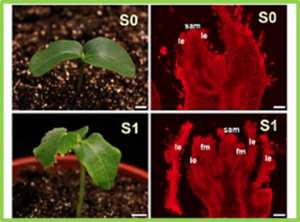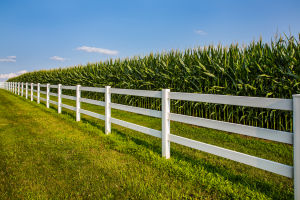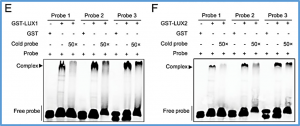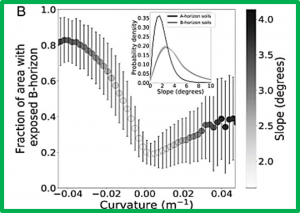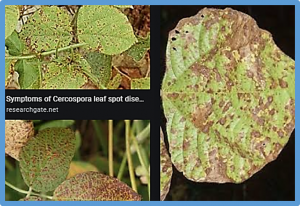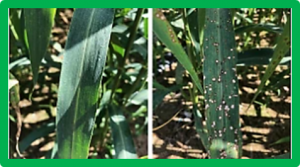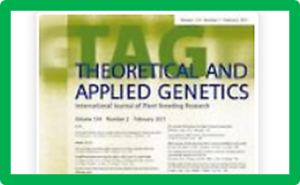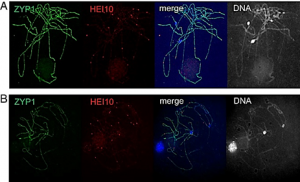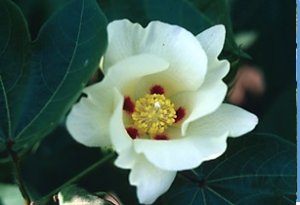Striga hermonthica (Del.) Benth., commonly known as the purple witchweed or giant witchweed, is a serious problem for maize-dependent smallholder farmers in sub-Saharan Africa. Breeding for Striga resistance in maize is complicated due to limited genetic variation, complexity of resistance and challenges with phenotyping. This study was conducted to (i) evaluate a set of diverse tropical maize lines for their responses to Striga under artifcial infestation in three environments in Kenya
Plant cystatins are cysteine proteinase inhibitors that play key roles in defense responses. In this work, we describe an unexpected role for the cystatin-like protein DEFORMED FLORAL BUD1 (CsDFB1) as a transcriptional regulator of local auxin distribution in cucumber (Cucumis sativus L.). CsDFB1 was strongly expressed in the floral meristems, floral primordia, and vasculature.
Ruminants and humans are unable to synthesize essential amino acids (EAAs) and conditionally essential amino acids (CEAAs) under normal conditions and need to acquire them from plant sources. Maize plays, as a major crop, a central role in global food security. However, maize is deficient in several EAAs and CEAAs. Genetic engineering has been successfully used to enrich the EAA content of maize to some extent, including the content of Lys,
Photoperiod sensitivity is a key factor in plant adaptation and crop production. In the short-day plant soybean, adaptation to low latitude environments is provided by mutations at the J locus, which confer extended flowering phase and thereby improve yield. The identity of J as an ortholog of Arabidopsis ELF3, a component of the circadian evening complex (EC), implies that orthologs of other EC components may have similar roles.
Soil erosion in agricultural landscapes reduces crop yields, leads to loss of ecosystem services, and influences the global carbon cycle. Despite decades of soil erosion research, the magnitude of historical soil loss remains poorly quantified across large agricultural regions because preagricultural soil data are rare, and it is challenging to extrapolate local-scale erosion observations across time and space.
Cercospora leaf spot (CLS) caused by the fungus Cercospora canescens is an important disease of mungbean. A QTL mapping using mungbean F2 and BC1F1 populations developed from the “V4718” (resistant) and “Kamphaeng Saen 1” (KPS1; susceptible) has identified a major QTL controlling CLS resistance (qCLS). In this study, we finely mapped the qCLS and identified candidate genes at this locus.
Leaf blast disease of foxtail millet (Setaria italica) is caused by Pyricularia spp., can infect all the aboveground parts of plants, and is the most frequently observed blast disease in China. Lack of information on genetic control of disease resistance impedes developing leaf blast-resistant cultivars. An F6 recombinant inbred line (RIL) population from the cross Yugu 5 × Jigu 31 was phenotyped for its reactions to leaf blast in six field trials in the naturally diseased nurseries.
Diallel experiments are based on a set of possible crosses between some homozygous (inbred) lines. For these experiments, six main diallel models are available in literature, to quantify genetic effects, such as general combining ability (GCA), specific combining ability (SCA), reciprocal (maternal) effects and heterosis. Those models tend to be presented as separate entities, to be fitted by using specialised software
Meiotic recombination is a fundamental process that generates genetic diversity and ensures the accurate segregation of homologous chromosomes. While a great deal is known about genetic factors that regulate recombination, relatively little is known about epigenetic factors, such as DNA methylation. In maize, we examined the effects on meiotic recombination of a mutation in a component of the RNA-directed DNA methylation pathway
Salinity stress seriously affects plant growth and limits agricultural productivity of crop plants. To dissect the genetic basis of response to salinity stress, a recombinant inbred line population was developed to compare fiber quality in upland cotton (Gossypium hirsutum L.) under salt stress and normal conditions. Based on three datasets of (1) salt stress, (2) normal growth, and (3) the difference value between salt stress and normal conditions, 51, 70, and 53 QTL were mapped, respectively. Three QTL for fiber length (FL) (qFL-Chr1-1, qFL-Chr5-5, and qFL-Chr24-4) were detected under both salt and normal conditions and explained 4.26%, 9.38%, and 3.87% of average phenotypic variation, respectively.


 Curently online :
Curently online :
 Total visitors :
Total visitors :

